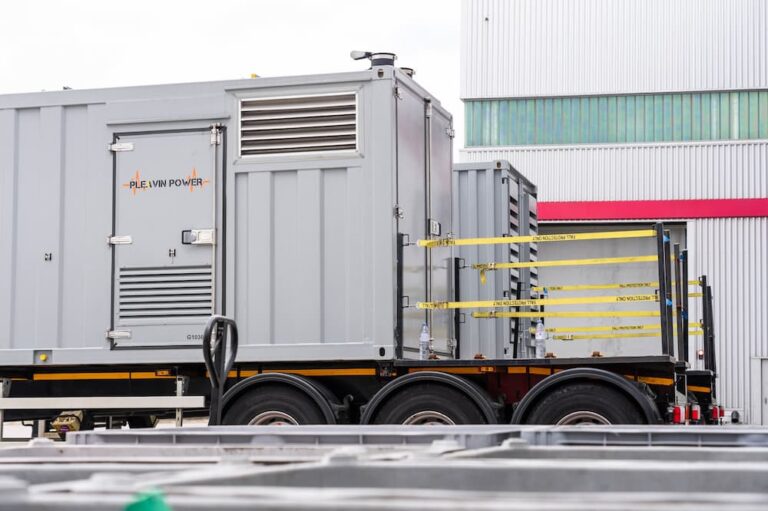During the unpredictable winters, your home may suddenly lose power – and this can leave you thinking what are the best next steps. No one wants to sit in a dark home without any power, not to mention it can leave the whole household restless.
This is where a power generator can come in handy and start to repower appliances in your home (e.g. your refrigerator) so you don’t have to worry about your food potentially spoiling, which could leave you out of pocket in the hundreds.
Generators are highly durable pieces of equipment that you can rely on – but like any piece of equipment, there is a risk that they could potentially not work. But what do you do when you realise that your generator is not working? In this article, we are going to give you some tips that will help get your generator back up and running for you.
Get A Repair Service
Generators are highly complex pieces of equipment and if you’ve had no qualifications or experience in dealing with power generators, you will not understand what exactly is wrong with your generator. It is recommended that you don’t attempt to repair or service your generator if you are not qualified to do so as you run the risk of further damaging your generator or potentially hurting yourself in the process.
The team here at Pleavin Power will be able to successfully identify any problems that your generator may be suffering from and fix them there and then. We’ll follow health and safety guidelines as well as manufacturer guidelines so you aren’t at risk of losing your warranty.
If your generator is not working, we have helped repair hundreds of generators across the United Kingdom with our high-quality generator repair and generator servicing – get in touch with us today to get your generator back up and running again.
The Fuel Tank Is Low
One of the first things that you should be checking if your generator is not working is your fuel levels. If you have a gasoline generator, have a quick check of the fuel levels and if you notice they are low then add some more gas. If you own a propane-fuelled generator, check the level of fuel and then make sure that all your valves and tubing connecting to the propane tank of your generator are open.
If you do have a gasoline-powered generator then keep in mind if you have any gas that is over two months old that it may potentially damage your generator’s engine. If that is the case, then you should drain it from the fuel tank – and once drained, refuel your tank with fresh gasoline.
Dead Battery
A dead battery is a problem we often associate with cars – if your car isn’t starting, you’ll usually check the battery first. The same applies to generators – if your generator is struggling to function, then you may have a dead battery. You can attempt to recharge your battery by using a 12-volt DC outlet or you could give it a jump from your car battery.
If you have already tried to recharge your battery through these methods then it is most likely not a problem with your generator battery. If you believe that you may require an emergency generator service, please do not hesitate to get in touch with our team and we will be sure to assist in any way we can.
Adjusting Your Generator’s Choke Control
Your generator’s choke control will help regulate the air levels within the carburettor when the engine of the generator starts up. If the motor is unable to turn over then the problem may be the amount of air mixing with your fuel.
A cold generator engine will have the choke fully closed. When your engine begins to warm up, you can adjust the choke to ensure that it is fully open. However, if you’ve noticed that your generator engine is still warm, then in order to restart your generator, the choke should be adjusted so it is halfway open.
Air Filter Is Clogged
If you’ve adjusted your generator’s choke control and it is still not working then there could be a problem with the generator’s air filter. If your generator’s air filter happens to be clogged, then it will prevent the carburettor from getting the air needed in order for combustion. You should be easily able to identify your air filters – and if you’ve noticed that the air filters seem a bit dirty, replace them and finish by moving the choke back to its closed position.
Carburettor Is Clogged
Still not working? Another aspect that could be clogged that is causing your generator problems is the carburettor. You may have already drained the carburettor earlier when looking for any stale gasoline that could damage your generator. If you have not done this, then it should be time for you to do it. Having stale gasoline inside your generator can cause a clog inside your carburettor, and that can cause no new fuel to be able to get through to start combustion.
In order to clean out your carburettor, you should start the process by closing your fuel valve then take the bowl at the bottom of your carburettor and find a brush or towel that will be able to clean any debris. If it suffering from any clogs from a brass jet nozzle then get a needle or straight pin. Once you have done either, then you can turn your fuel value back before you try to restart your generator.
Conclusion
If you’ve seemingly tried every process in order to get your generator back up and running but still won’t start then to save yourself the hassle, time and money you should reach out to the professionals here at Pleavin Power who can identify the problem. We will work to fix the problem quickly and efficiently and get your generator back to its best.
Or, you can opt for remote monitoring so we can check how you’re generator is running on a 24/7 basis. Whatever you decide, get in touch with our friendly support team today and get your generator repaired.

Jack is the owner of Pleavin Power which was founded in 2017. He has worked in the power industry for over a decade and has an extreme focus on providing a quality service to clients across the UK. This has led Pleavin Power to becoming the market leader in the Critical, Prime & Standby Power markets.








